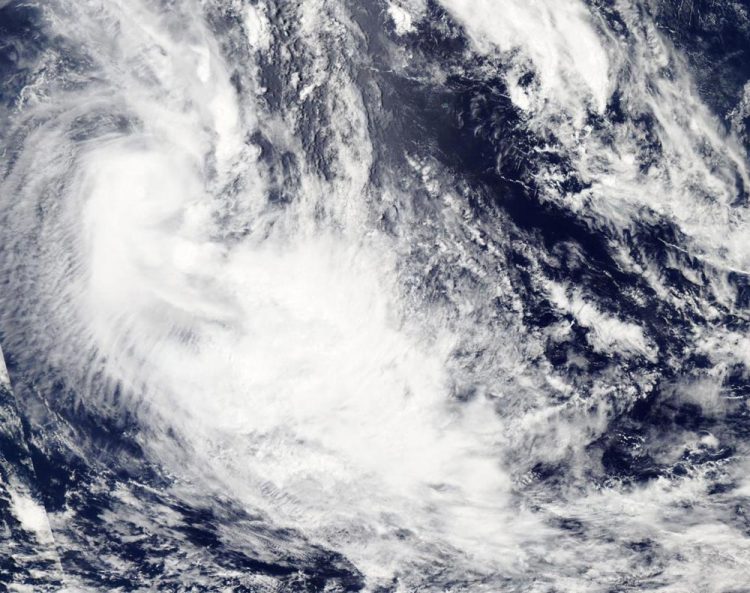NASA spies Tropical Cyclone 08P's formation

On Feb. 21, the MODIS instrument aboard NASA's Aqua satellite captured a visible image of newly formed Tropical Cyclone 08P. Credits: NASA Goddard MODIS Rapid Response Team
Tropical cyclone 08P developed on Feb. 22 at 0300 UTC (Feb. 21 at 10 p.m. EST), and strengthened by 1500 UTC (10 a.m. EST) into a tropical storm with maximum sustained winds near 35 knots (40 mph/62 kph).
08P is expected to maintain strength over the next day as it moves in a southeasterly direction in the South Pacific's open waters. 08P was located near 25.4 degrees south latitude and 165.8 degrees west longitude, about 660 nautical miles south-southeast of Pago Pago, American Samoa.
08P is moving to the southeast at 33 knots (38 mph/61 kph).
Like its predecessor Bart, Tropical Cyclone 08P is also dealing with vertical wind shear despite forming under those conditions.
The MODIS or Moderate Resolution Imaging Spectroradiometer instrument aboard NASA's Aqua satellite took a visible image of the storm on Feb. 21 as it was developing.
The MODIS image showed wind shear was pushing the clouds and strongest storms southeast of the low-level center of circulation. The MODIS image also showed that 08P is elongated from northwest to southeast.
The Joint Typhoon Warning Center or JTWC noted that dry air associated with a nearby trough (elongated area of low pressure) is wrapping around the northern quadrant of Tropical Cyclone 08P. JTWC expects 08P to become extra-tropical in a day.
Media Contact
All latest news from the category: Earth Sciences
Earth Sciences (also referred to as Geosciences), which deals with basic issues surrounding our planet, plays a vital role in the area of energy and raw materials supply.
Earth Sciences comprises subjects such as geology, geography, geological informatics, paleontology, mineralogy, petrography, crystallography, geophysics, geodesy, glaciology, cartography, photogrammetry, meteorology and seismology, early-warning systems, earthquake research and polar research.
Newest articles

High-energy-density aqueous battery based on halogen multi-electron transfer
Traditional non-aqueous lithium-ion batteries have a high energy density, but their safety is compromised due to the flammable organic electrolytes they utilize. Aqueous batteries use water as the solvent for…

First-ever combined heart pump and pig kidney transplant
…gives new hope to patient with terminal illness. Surgeons at NYU Langone Health performed the first-ever combined mechanical heart pump and gene-edited pig kidney transplant surgery in a 54-year-old woman…

Biophysics: Testing how well biomarkers work
LMU researchers have developed a method to determine how reliably target proteins can be labeled using super-resolution fluorescence microscopy. Modern microscopy techniques make it possible to examine the inner workings…





















